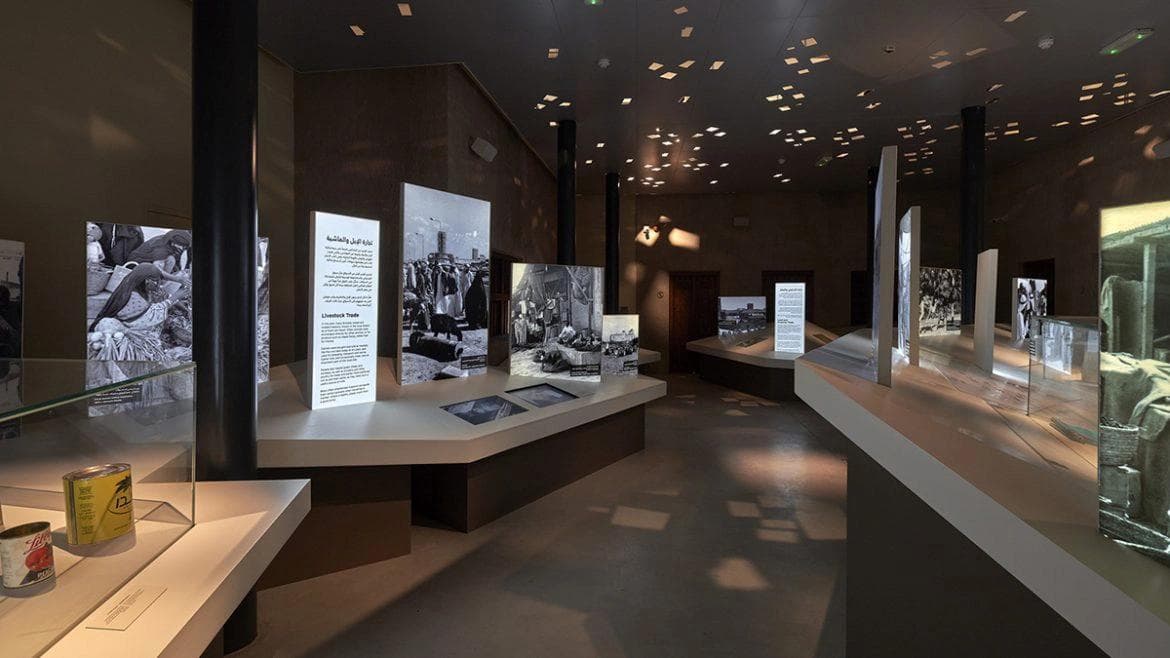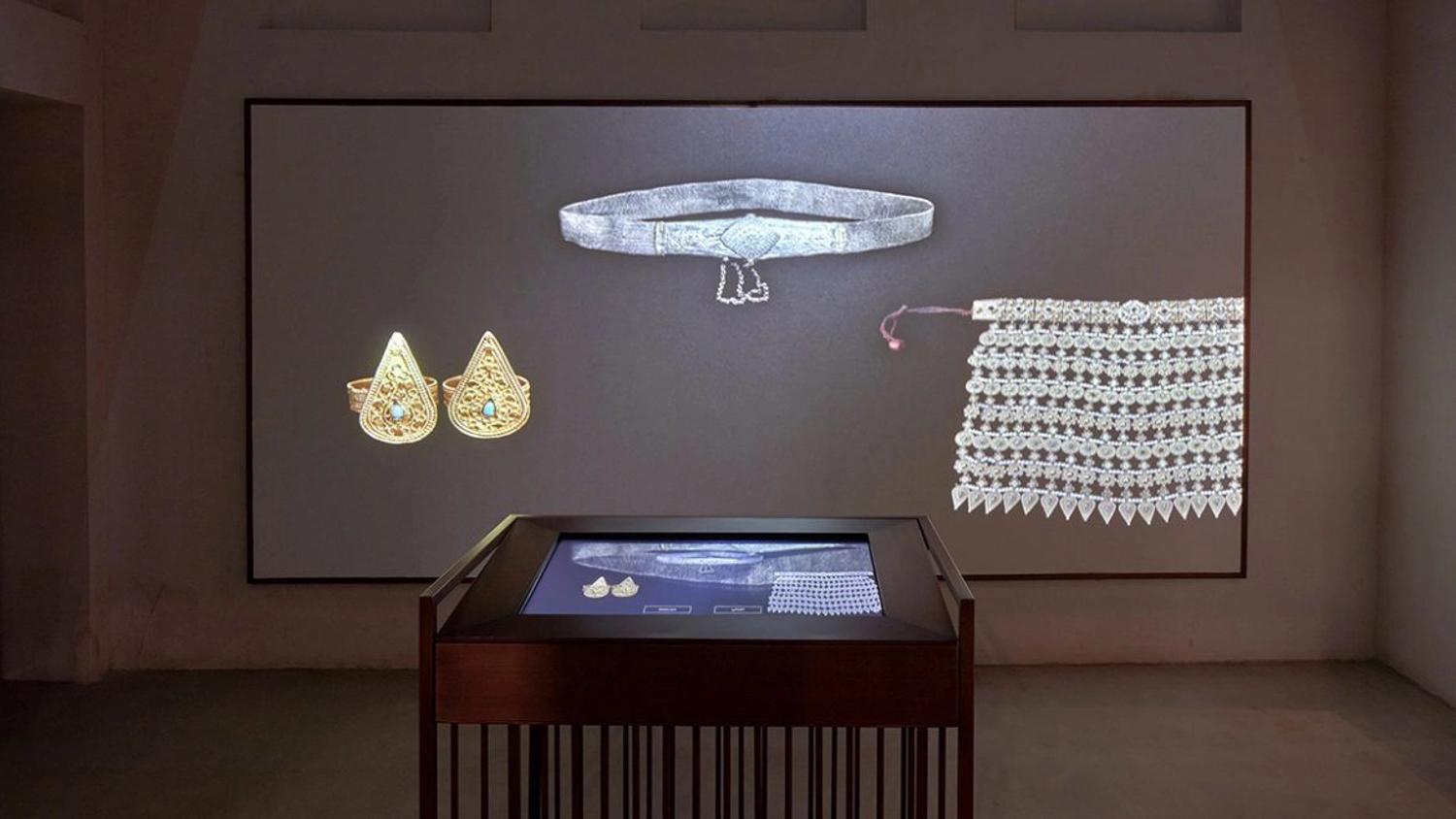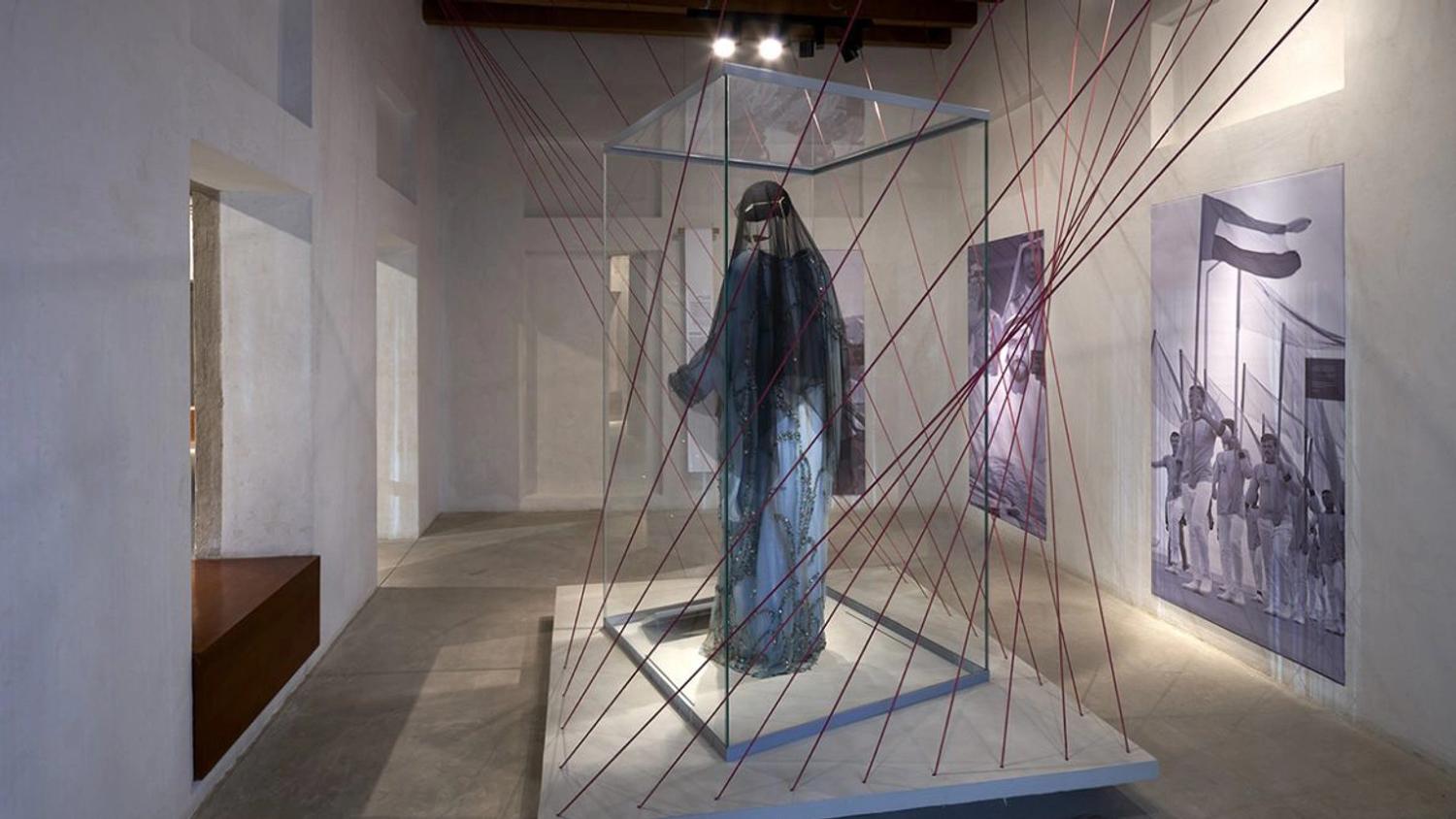ACCIONA Cultura delivers four exhibition pavilions of the Al Shindagha Museum in Dubai

ACCIONA Cultura has completed the exhibition implementation of four pavilions of the Al Shindagha Museum in Dubai: Traditions, Life on the Land, Traditional Food House, and House of Poetry.
Al Shindagha Museum, developed by Dubai Municipality in collaboration with Dubai Culture & Arts Authority and Dubai Economy and Tourism Department, includes clustered historic houses that showcase Dubai’s history and culture using the most innovative technologies.
The Museum combines conceptual exhibits, interactives, video projections and collection displays to create a unique experience for visitors.
ACCIONA Cultura has completed the exhibition implementation of four pavilions of the Al Shindagha Museum in Dubai: Traditions, Life on the Land, Traditional Food House, and House of Poetry.
Dubai Municipality (DM) selected ACCIONA Cultura to carry out the partial design, technical development and museographic implementation of four stages of the exhibition project, which comprises 17 clustered historic houses covering a total exhibition area of 7,980 m².

Al Shindagha Museum is a new world class heritage museum in the Dubai Historic District that promotes the city’s historical, artistic and cultural heritage using the most innovative technologies. Al Shindagha is the area where the Al Maktoum ruling family of Dubai originally lived. The historic houses have been reconstructed using authentic methods by the DM Architectural Heritage and Antiquities Department in order to respect the original construction as much as possible.
Covering an area of 35,000 m2, Al Shindagha Museum will display more large collections with pieces of great historical and cultural value in an authentic context.
The museum is divided into several themed pavilions made up of clustered historic houses. Each pavilion focuses on a different topic relating to Dubai’s history and culture, within a number of overarching themes. The Traditions, Life on the Land, Traditional Food House, and House of Poetry pavilions have been developed and implemented entirely by ACCIONA Cultura. The Traditional Food House and House of Poetry have been designed by ACCIONA Cultura, and Traditions and Life on the Land pavilions are based on the design by Ralph Appelbaum Associates.
The museum project combines the most innovative experiential, participatory and interactive technologies through multisensory and immersive video installations and projection mapping, together with traditional objects and informative graphics.

Traditions
The Traditions pavilion at Shindagha Museum includes four houses dedicated to different traditions in Emirati culture, covering an exhibition area of 2,950 m2:
The Traditional Craft House is a space to explore the country’s handicrafts and understand their place in modern society through various ‘hands-on’ and interactive resources. This House shows significant collections of artefacts made by Emirati craftsmen using metal, pottery, wood and textile techniques. People can also learn how to make embroidery, talli (a traditional United Arab Emirates handicraft that creates an intricate adornment for all types of women’s clothing) or use a loom.
The Traditional Beauty & Adornment House celebrates the array of clothes, hairstyles and adornments, as well as the traditional ways of wearing them. The visitor will be surprised with a unique journey through time and place, immersing themselves in environments that showcase the traditional dress and adornment practices of Dubai. Mannequins will illustrate the various forms of dress for work or special occasions from the mountains to the coast.
In the Traditional Jewellery House displays materials, techniques and designs of jewellery pieces. Gold, silver, pearls and gemstones enrich the jewels that have been worn by generations of Emirati women. On the other hand, men used to carry a traditional knife, the Khanjar, which was sometimes of great value.
Finally, in the Traditional Healthcare House, visitors will learn about traditional medicines and cosmetics, treatments, herbal remedies and other elements used in personal hygiene. The exhibition incorporates topics related to science, history and human nature and is structured around easy-to-understand explanations, making it an enriching experience for all types of visitors. Plants in the three courtyards showcase the flora mentioned in the Quran, especially those connected to healing and cures with specific reference to UAE.
The four houses combine the richness of Dubai’s cultural heritage with the use of modern technologies. The AV productions record testimonies of the former way of life in the Emirate while interactive displays convey how the artefacts were made and used in the past.
Life on the Land
The Life on the Land pavilion covers an exhibition area of 3,280 m2 comprising 10 houses and a garden showcasing the Life on the Land theme. The exhibition focuses on the different land environments in the UAE – desert, coast and mountain – and how Emiratis used and shared natural resources to thrive and build communities. This ‘wave’ also includes an orientation space, a native plant garden, a café/restaurant, and an education centre.
Seven main themes contextualize the exhibition: The Land, Expressions, Water, Flora and Fauna, Trade, Journeys, and Landscape Garden.
In the area exploring The Land, knowledge of environments is a fundamental key to the prospering of life in Dubai. By connecting Dubai’s diverse landscapes in an episodic manner, accompanied by traditional methods of travelling and tracking, visitors will gain an immersive and local perspective from the past.
The Expressions area offers a more in-depth look at the intangible heritage of Emirati culture, including music, poetry and folktales. The pavilion captures how people were able to make a life here, and how the land has become a source of inspiration for its people. The creative expressions of the people of Dubai are a celebration of this life – the essence of their mastery of, respect for and intimate connection to their environment – communicated through the intangible heritage of performance, poetry and verse.




